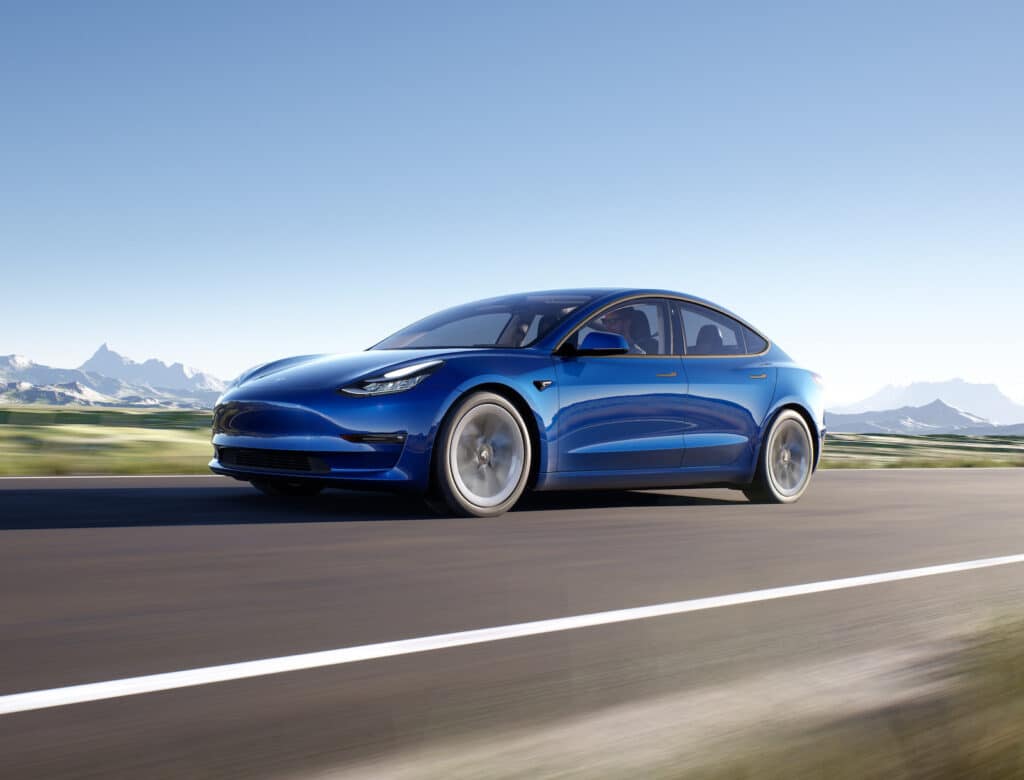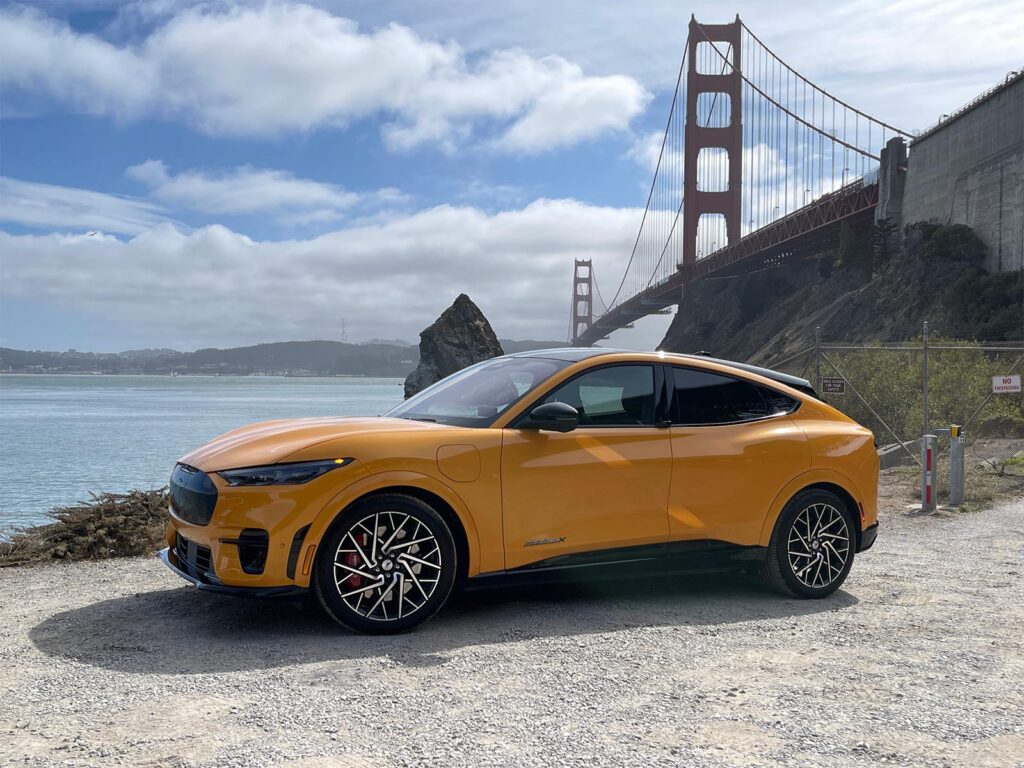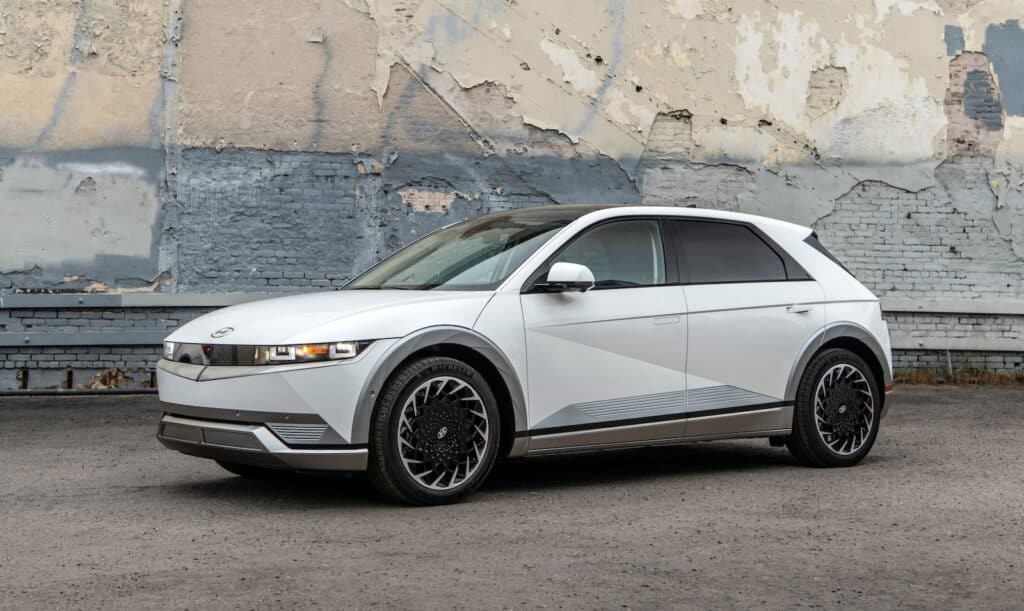AUTONEWS

Tesla continues to dominate the U.S. battery-electric vehicle market, its Models Y and 3 far and away the best-sellers in the emerging BEV segment. But an assortment of competitors are racing to catch up, including Ford Motor Co., it’s Mustang Mach-E third on the all-electric sales charts.
Several things are reshaping the race for dominance in the BEV market. These include a surge in demand for all-electric models, a rapid expansion of products giving buyers plenty of new options, and an aggressive game of catch-up being played by legacy automakers like Ford, Hyundai, Kia, General Motors and Stellantis. Add the arrival of new all-electric entrants such as Rivian and Lucid, and things get even more competitive.
And while Tesla is expected to continue increasing its overall volume, its market share is tumbling. Where it accounted for more than three-quarters of all new BEVs sold in the U.S. last year.
According to Morgan Stanley, Tesla accounted for a little more than 60% of the U.S. market through the end of July, and some analysts expect that to drop below 40% by the end of 2023, with one well-respected analyst forecasting it could dip to as little as 11% by 2025.
Going all in...The auto industry is betting big on the shift to battery-electric propulsion. Combined worldwide spending will exceed at least $500 billion by the end of the decade, according to a study released earlier this year by AlixPartners.
They really have no choice. European regulators effectively want to end sales of new vehicles with internal combustion engines by 2035. That’s the same target now set by the State of California, with as many as 17 other states expected to adopt its zero-emissions guidelines. President Joe Biden, meanwhile, has laid out a target of getting a 50% market share for plug-in vehicles by 2030.
Though the U.S. market has a long way to go, proponents insist it is moving in the right direction. BEVs accounted for barely 1% of the market in 2019. That surged to roughly 7.5% in August, according to Steve Majoros, the chief of marketing for Chevrolet. In terms of vehicle registrations, they accounted for 4.9% of new vehicles during the first seven months of this year, nearly double the 2.6% share through July 2021.
Still top dog...Who will win the race is far from certain, however. Up until now, Tesla has clearly been in the catbird seat. And, while it is facing plenty of new competition, it’s still the dominant player.
American motorists purchased 116,673 Tesla Model Y SUVs between January and July of this year, along with 108,809 Model 3 sedans. Sales of the automaker’s original Models S and X have lost momentum, generating a combined 34,254 sales during the period. Significantly, that was enough to still dominate the U.S. premium vehicle sector, which includes conventional products like the Mercedes-Benz S-Class and BMW 7 Series.
But a closer look reveals a chase is on. Ford’s Mach-E generated 22,525 sales during the seven-month period ending in July — in some months exceeding sales of the gas-powered Mustang coupe.

Tesla reportedly has reservations for as many as 1 million Cybertrucks, but it has repeatedly delayed the launch of the vehicle and many observers question whether it will actually be able to get anywhere near that number actually translated into purchases. A key reason is that there is a flood of competition coming. By TheDetroitBureau’s count, there may be as many as a dozen or more all-electric pickups available by mid-decade. These will include the Lightning, the GMC Hummer and Sierra SUV, the Chevrolet Silverado EV, the Ram 1500 EV and entries from Toyota, Hyundai and others.
Notably, that could include several pickups from startups like Rivian’s R1T.
All told, the number of long-range BEVs has jumped from around 15 at the end of 2021 to a forecasted 50 by the end of this year. And AutoForecast Solutions has put the likely tally at more than 140 by 2025.
Adding to the line-up?...Tesla, however, has few new products coming. Beyond the Cybertruck it has only confirmed the addition of a second-generation Roadster. And CEO Elon Musk earlier this year said he had indefinitely delayed the development of models more affordable than today’s Models 3 and Y.
Currently, the average BEV is rolling off the showroom floor for around $65,000 according to Cox Automotive and Edmunds estimates. General Motors and Honda, among others, hope to finally deliver products that can target more mainstream buyers.
And not just by Ford or GM. South Korean siblings Hyundai and Kia now have three of the 10 best-selling BEVs in the U.S. market, the sixth-ranked Hyundai Ioniq, and the Kia EV6 and Niro ranked seventh and tenth, respectively.

“Tesla didn’t move fast enough … to shut the door” on its competition, said John Murphy, lead auto analyst for Bank of America Research, during a presentation of his annual Car Wars study in June. Murphy forecasts Tesla’s share will slide to just 11% by 2025. During the same period, both General Motors and Ford Motor Co. will see their share of the emerging market for BEVs grow to around 15% each.
There are a number of things that could impact the shape of the U.S. BEV market by mid-decade. Tesla could surprise the market with more products. And it could prove more difficult than forecast for its competitors to draw in both luxury and mainstream buyers.
There’s also the ongoing semiconductor shortage, along with other supply chain disruptions. Legacy makers, as well as some of the nascent EV makers, have struggled to simply meet their current orders because they don’t have the necessary parts and components. That led GM to cut off orders this week for the big GMC Hummer EV pickup. It has 90,000 advance orders but no clear target date to deliver those vehicles to customers.
The chip shortage is widely expected to stretch into 2023. But automakers have already begun lining up increased supplies and, with more new entrants, more new products, and increased capacity, they appear ready to pose a serious collective threat to Tesla going forward.
by Paul A. Eisenstein

Nenhum comentário:
Postar um comentário